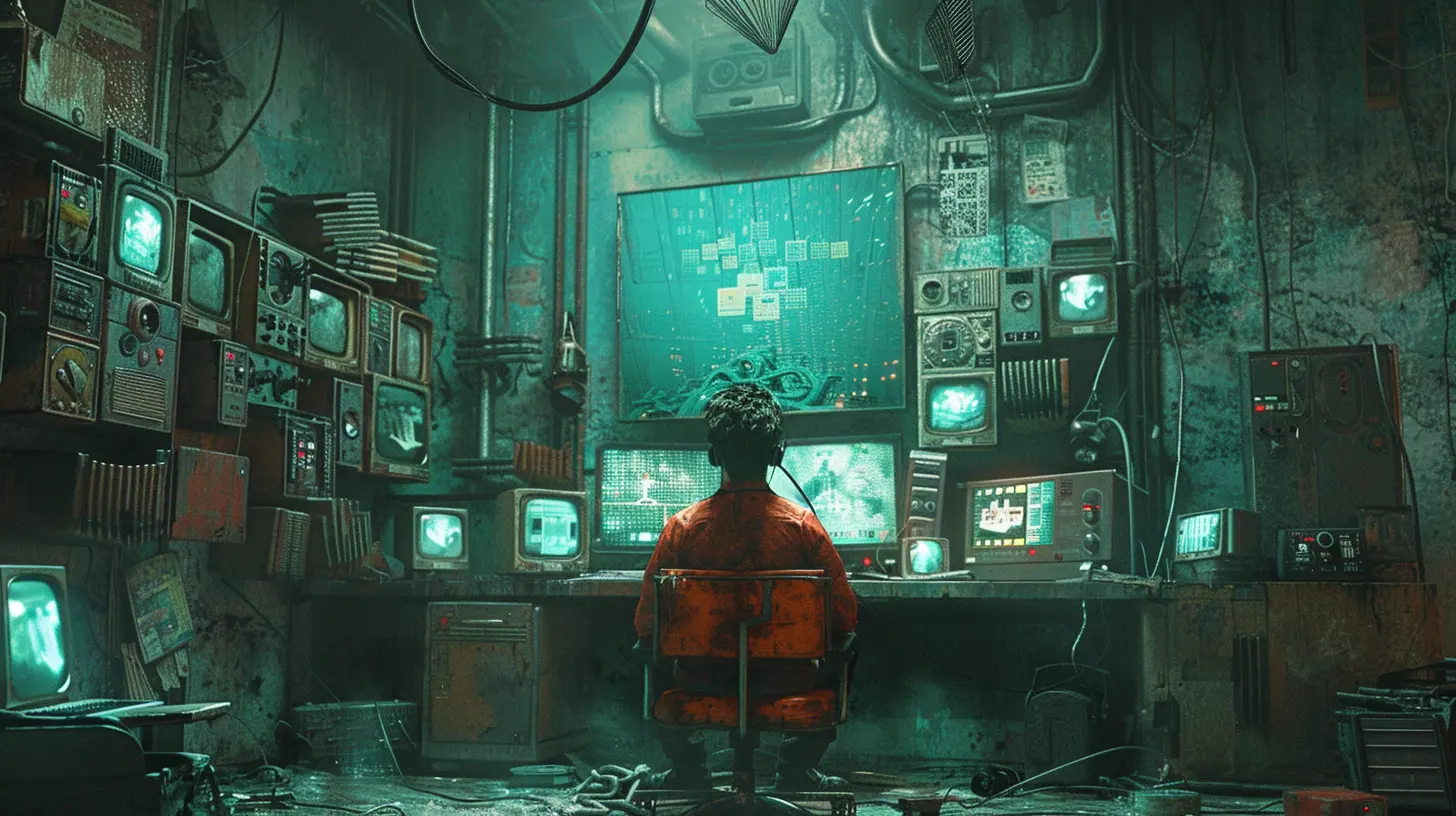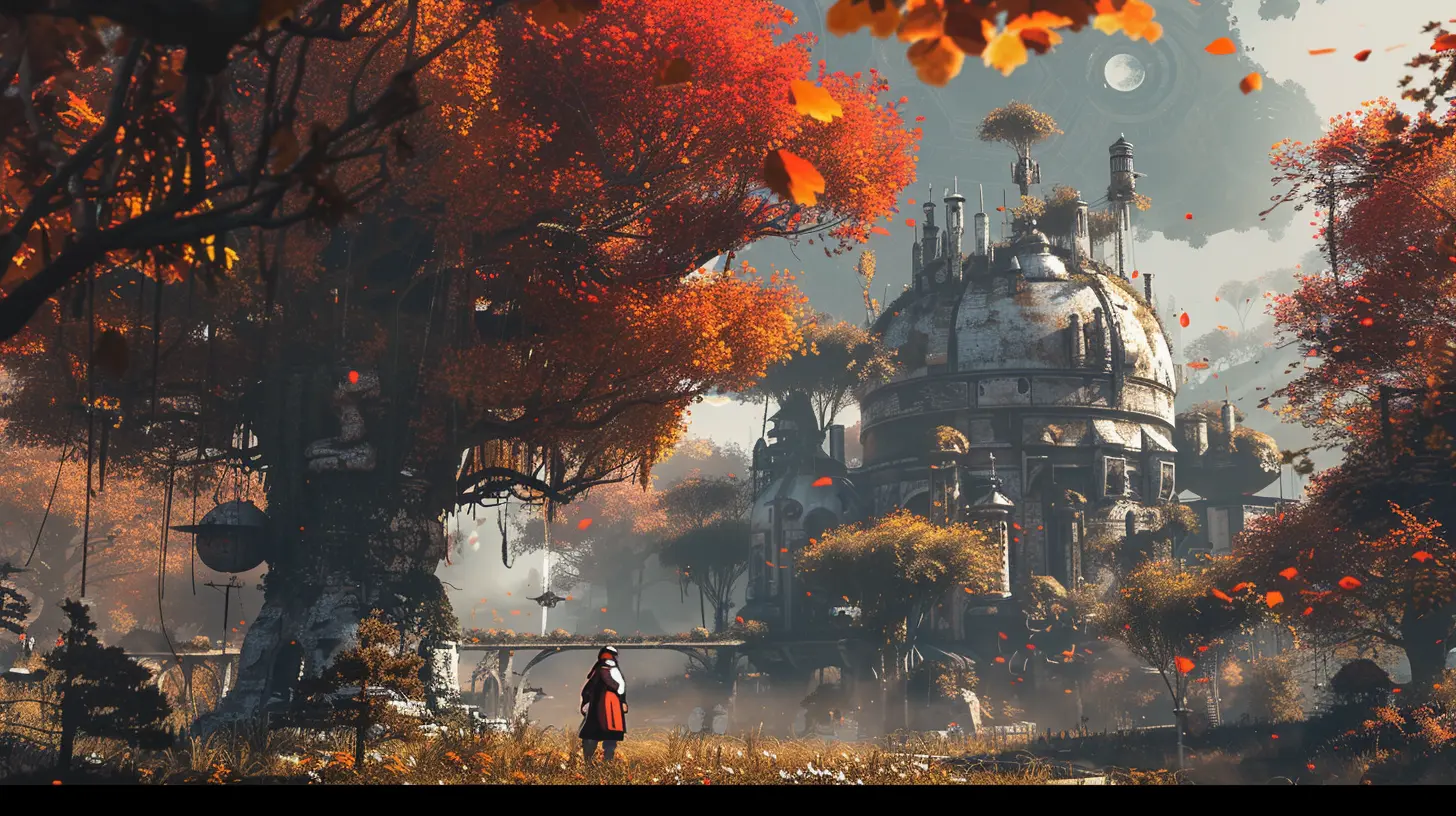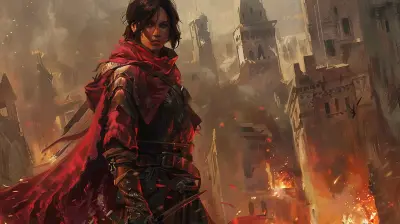Breaking the Fourth Wall: Meta-Narratives in Game Design
30 September 2025
Gaming isn’t just about leveling up, collecting loot, or defeating the final boss anymore. Oh no, those days are long behind us. We’ve entered an era where video games are no longer just games—they’re experiences, stories, and sometimes, they’re questions about the nature of reality itself. One of the most fascinating ways modern games mess with our heads is by breaking the fourth wall. It's like your favorite game suddenly turns around and says, “Hey, we know you're out there pressing those buttons.”
So, what the heck is "breaking the fourth wall"? Why is it such a big deal in game design? And more importantly, how do meta-narratives flip gaming conventions on their head while leaving us awestruck? Grab your favorite controller (or keyboard), settle in, and let’s dive deep into how games are rewriting the rules of storytelling.
What Does "Breaking the Fourth Wall" Even Mean?
Okay, let’s start with the basics. “Breaking the fourth wall” is a fancy term often used in theater, movies, or TV to describe when a character directly addresses the audience. Imagine you're watching a movie and suddenly, the protagonist looks straight into the camera and cracks a joke. That’s breaking the fourth wall—it shatters the illusion of separation between the fiction and you, the viewer.Now, in video games? The concept goes way beyond a cheeky wink or an “I see you there.” It’s more interactive. It’s more personal. Games use their interactivity to twist the knife. It’s not just a character knowing you’re watching—it’s the game knowing you’re playing. Kind of creepy, right? 
Why Do Meta-Narratives in Games Work So Well?
Games are inherently interactive. You’re not just a passive observer; you’re a participant. This one simple fact makes games the perfect playground for developers to mess with your head. When a game breaks the fourth wall, it challenges your expectations. It turns you, the player, into a character in its story.Think about it—when you’re immersed in a game, you’re already wrapped up in its rules and systems. But what happens when it flips the script? When it acknowledges you as a real-world player or asks you existential questions that tug at your brain? It’s like playing chess, and halfway through the game, the pieces start talking back. 
Iconic Examples of The Fourth Wall: When Games Crossed the Line
Let’s take a stroll down memory lane and revisit some of the most mind-bending fourth-wall-breaking moments in gaming history. These are the games that dared to say, “Nope, we’re not staying in our lane.”1. Metal Gear Solid: Psycho Mantis Reads You Like a Book
You can’t talk about fourth-wall-breaking without mentioning Metal Gear Solid. Remember the infamous Psycho Mantis boss fight? Not only did this guy read your memory card to comment on your other game saves, but he also made you switch your controller to a different port to beat him. What the heck, Kojima?This moment didn’t just break the fourth wall—it shattered it. Suddenly, your gameplay experience wasn’t just inside the screen. It was spilling out into the real world. And the message was clear: The game knows.
2. Undertale: Decisions That Haunt You
Toby Fox’s Undertale is practically a love letter to meta-narratives. The game constantly reminds you that your choices have consequences. Ever try doing a “genocide run”? The game remembers. Even if you reset, the characters know what you’ve done.And let’s not forget Flowey, the villain who talks directly to you—the player. He’s not talking to your character or avatar—he’s addressing the person holding the controller. It’s unsettling and brilliant at the same time.
3. Doki Doki Literature Club: Sweet Dreams Are Made of This?
What starts as a lighthearted visual novel about high school romance takes a sharp, horrifying turn. Doki Doki Literature Club isn’t just breaking the fourth wall—it’s tearing it down and stomping all over it.Monika, one of the characters, becomes self-aware. She deletes the other characters, manipulates the game files, and ultimately traps you in her digital hellscape. At one point, the game feels like it’s been taken over by a sentient AI that’s obsessed with you. Creepy much?
4. The Stanley Parable: Choice Is an Illusion
If existential dread had a game form, it’d be The Stanley Parable. The Narrator constantly breaks the fourth wall, questioning your decisions and even mocking you for trying to defy him.The entire game is a meta-commentary on free will and narrative design, brilliantly blurring the line between the player and their actions. It’s a game that doesn’t just let you break the rules—it points out that the rules don’t matter. 
How Game Developers Use Meta-Narratives to Innovate
So, what makes all this fourth-wall-breaking magic possible? It’s not just clever writing—it’s a deep understanding of what makes games unique. Let’s break it down:1. Interactivity as a Storytelling Tool
Unlike books or movies, games are interactive. You’re not just consuming the story—you’re actively shaping it. Developers use this to make you question the nature of your role. Are you a player, a puppet, or something more?2. Subverting Player Expectations
Players enter games with certain assumptions: There’s a story, a goal, an ending. Breaking the fourth wall smashes those conventions. It’s like opening the fridge and finding your milk carton yelling at you for drinking too much coffee.3. Emotional Engagement
When a game acknowledges your presence, it feels personal. Suddenly, it’s not just a game—it’s you. This emotional connection can make moments more impactful, whether it’s fear, guilt, or even humor.Fourth Wall Breaking in Indie vs. AAA Games
Here’s something interesting—breaking the fourth wall seems to thrive in indie games. Why? Because indie devs love pushing boundaries. They don’t have huge studios telling them to “play it safe.” Games like Pony Island, The Beginner’s Guide, and OneShot have all used meta-narratives to create unforgettable experiences.That doesn’t mean AAA games are slacking. Titles like Control and Deadpool have dipped their toes into fourth-wall-breaking waters. But let’s be real—smaller teams with creative freedom are often the ones willing to take the wildest risks.
Why Players Love (and Sometimes Hate) Meta-Narratives
Here’s the deal: Not everyone loves having games play mind games with them. Some players find it jarring, frustrating, or even pretentious. And to be fair, when done poorly, fourth-wall breaks can feel like cheap gimmicks or cringe-worthy attempts to be “edgy.”But when done right? Chef’s kiss. Players love them because they make games feel alive. It’s like the medium itself is evolving, pulling you deeper into the experience. It’s unsettling, sure, but it’s also unforgettable.
The Future of Fourth Wall Breaking
As game design continues to evolve, we can expect even crazier experiments with meta-narratives. Imagine fully immersive VR games that not only break the fourth wall but warp reality around you. What if a game could gather data from your life to craft a story uniquely tailored to you?It’s exciting—and a little terrifying. But that’s the beauty of video games, isn’t it? They’re not just entertainment; they’re an exploration of what storytelling can be. And breaking the fourth wall? That’s just the beginning.
Final Thoughts: It’s More Than Just a Gimmick
At the end of the day, breaking the fourth wall isn’t just some clever trick. It’s a way to challenge players, deepen narratives, and blur the line between reality and fiction. It’s games saying, “We see you—and we’re not afraid to mess with your head.”So, the next time you boot up a game and feel like it’s watching you back? Don’t freak out. Lean into it. Because that’s what makes gaming magical—it’s not just a story you watch or listen to. It’s a story you *live.
all images in this post were generated using AI tools
Category:
Video Game DesignAuthor:

Avril McDowney
Discussion
rate this article
1 comments
Tiffany Lopez
Great insights! Meta-narratives add depth and engage players in unique ways. Keep it up!
October 2, 2025 at 4:55 PM

Avril McDowney
Thank you! I'm glad you found the insights valuable. Engaging with meta-narratives can truly enhance the player experience!


